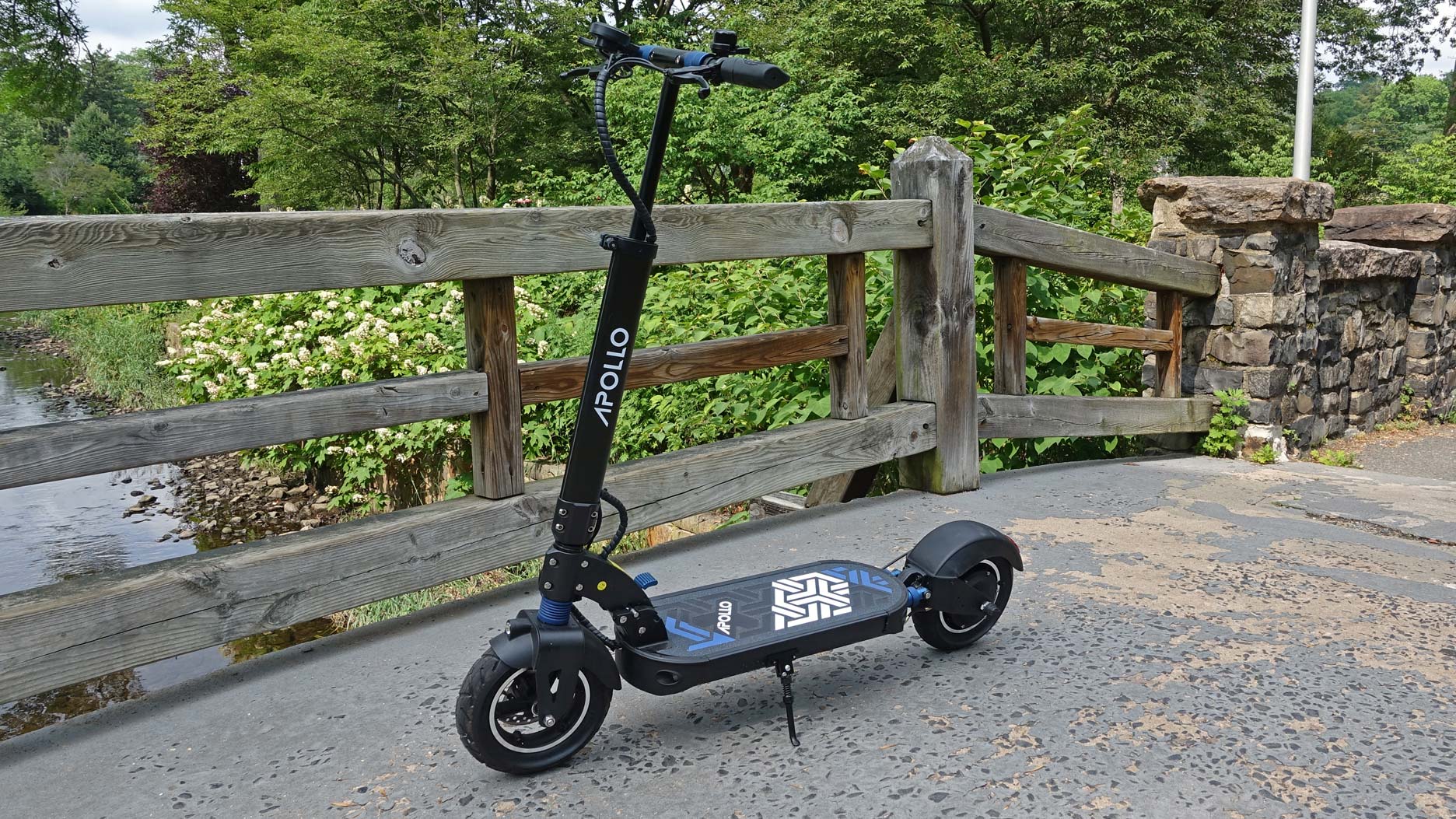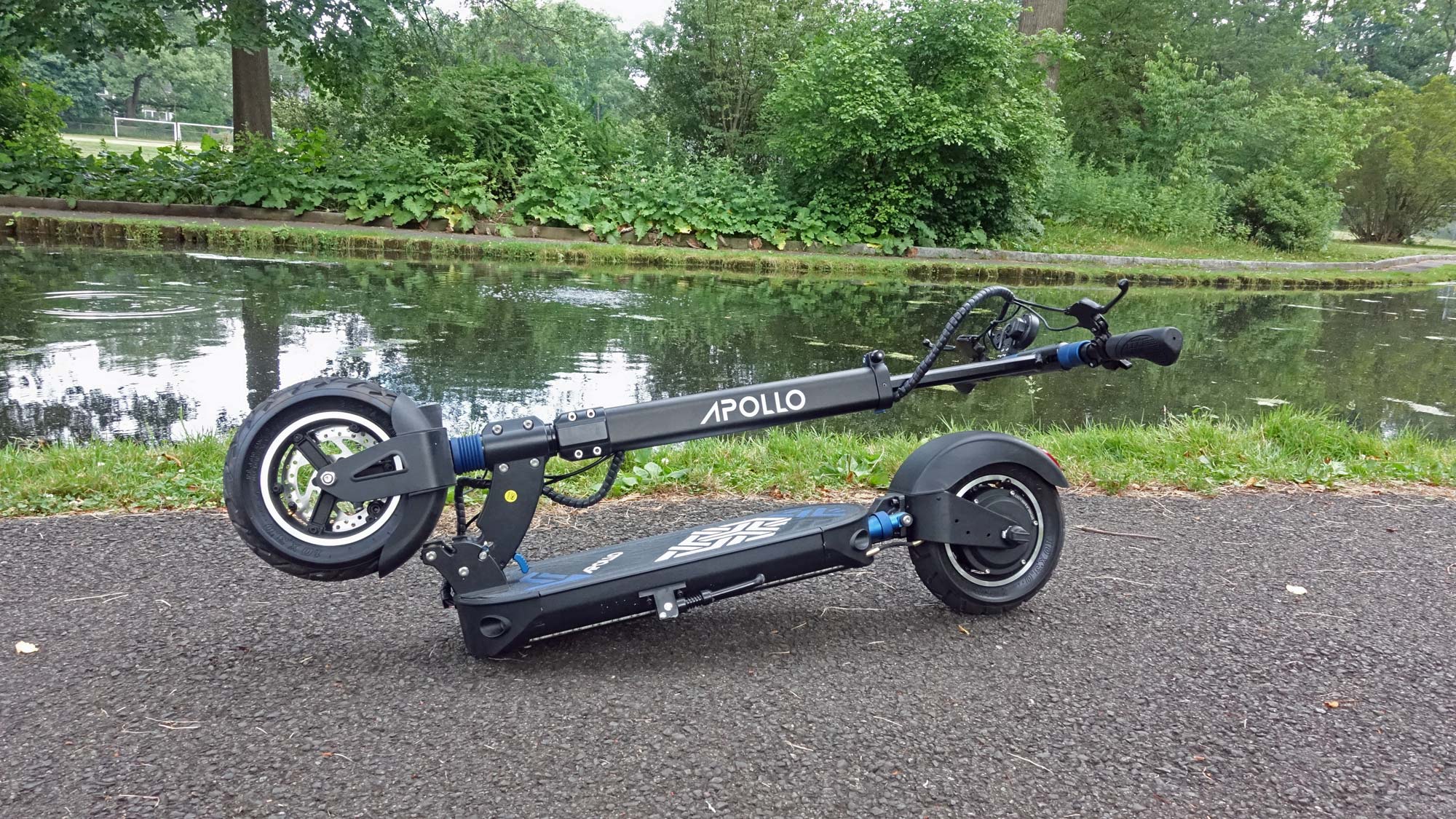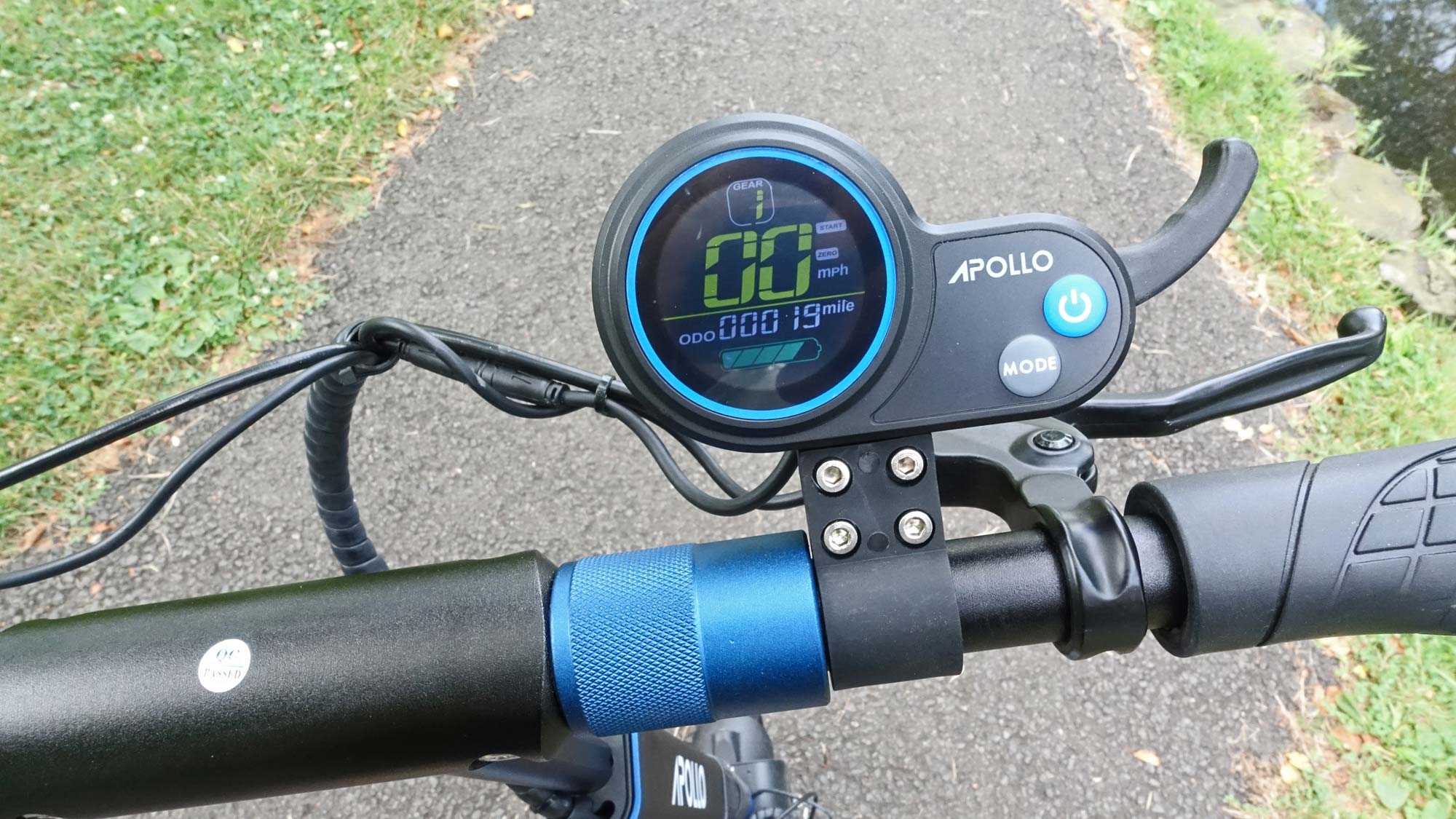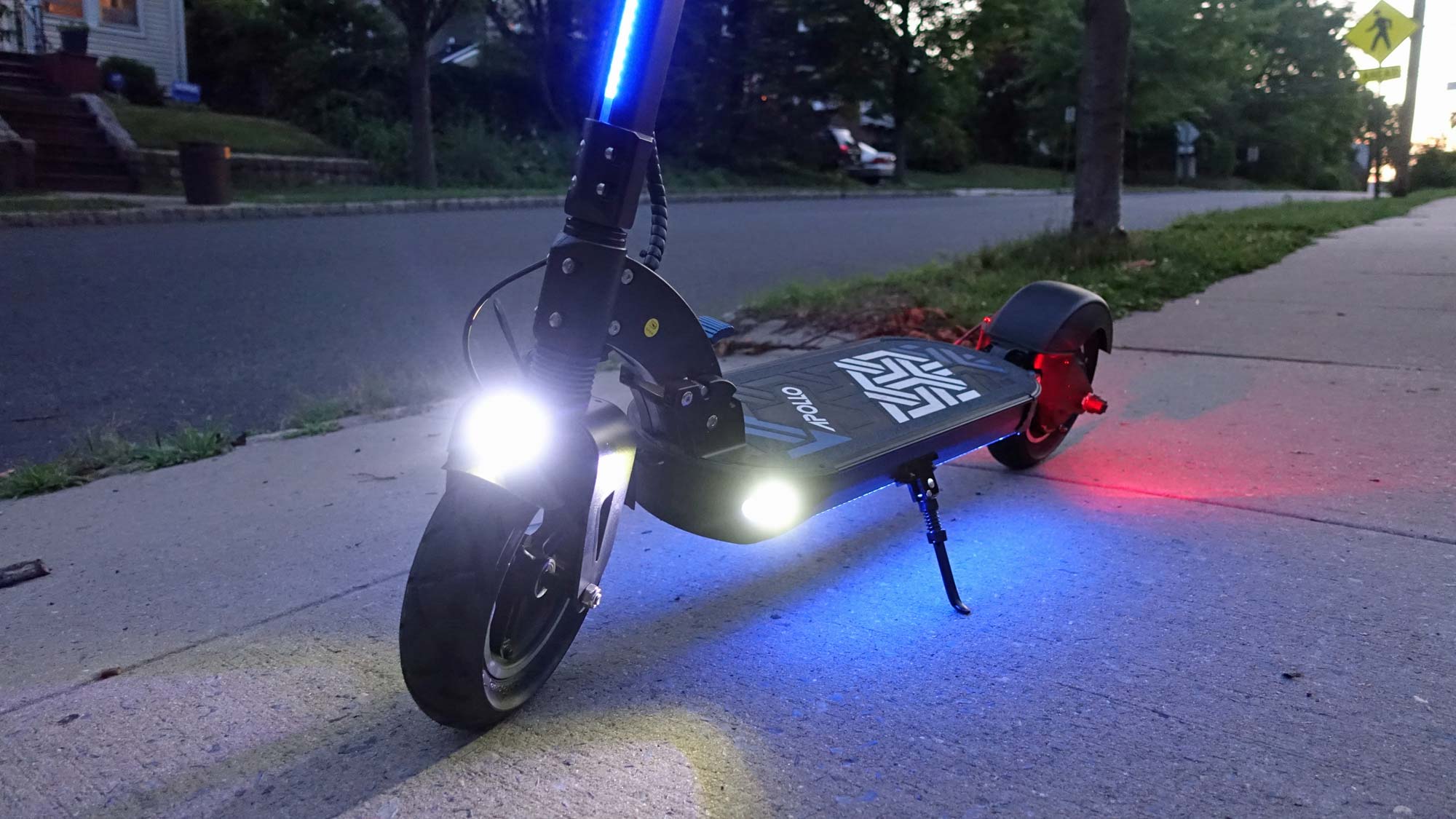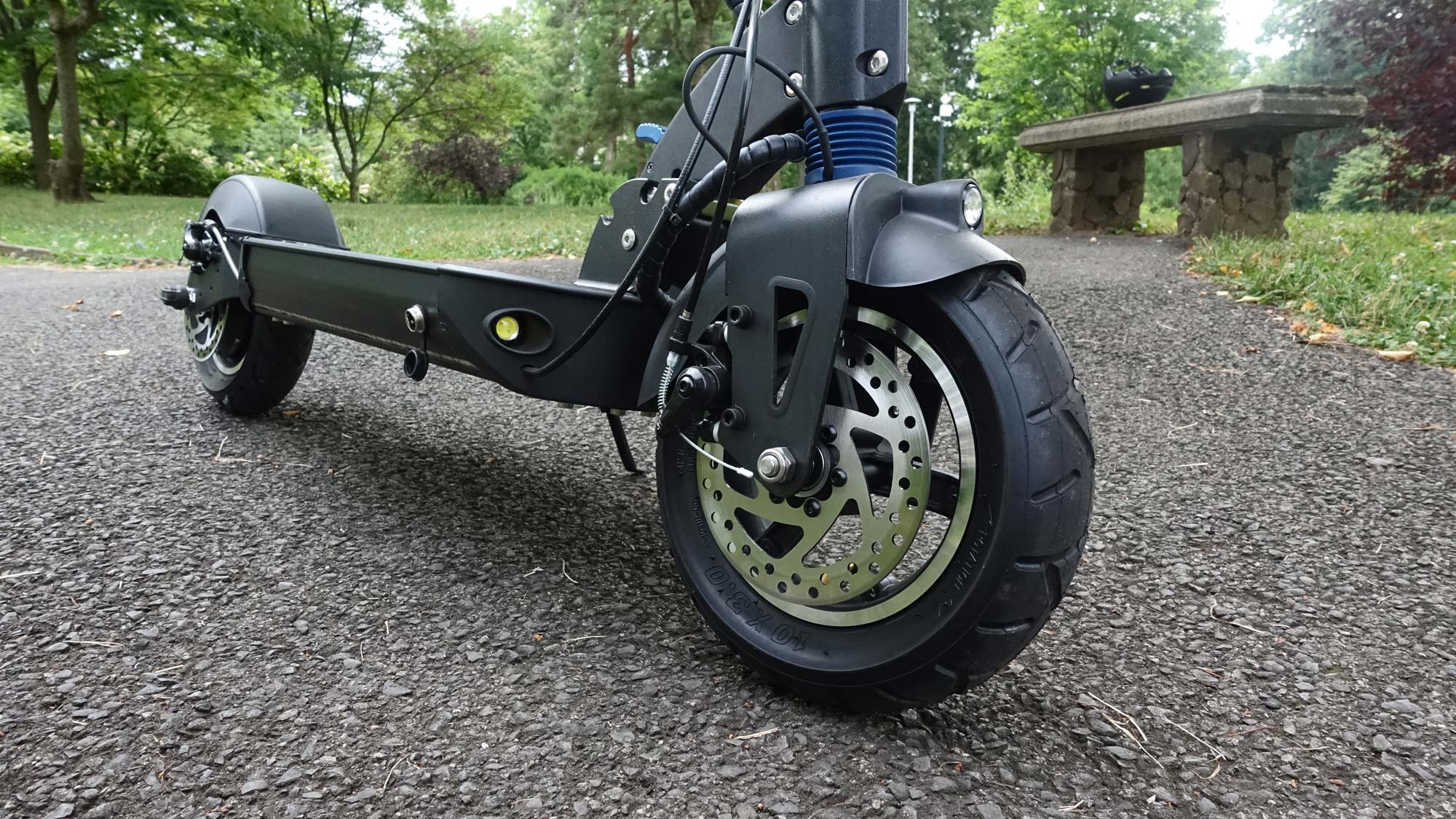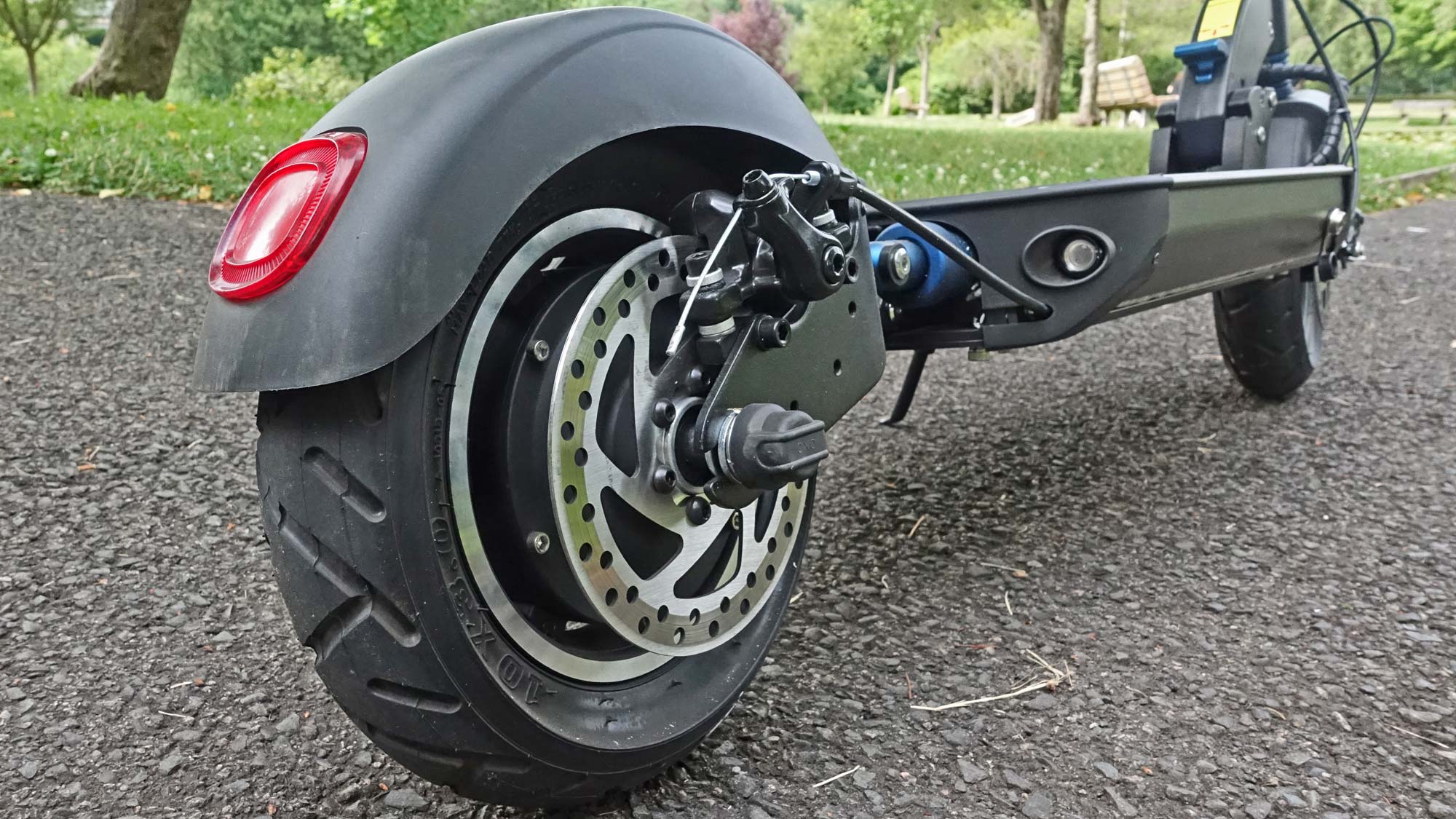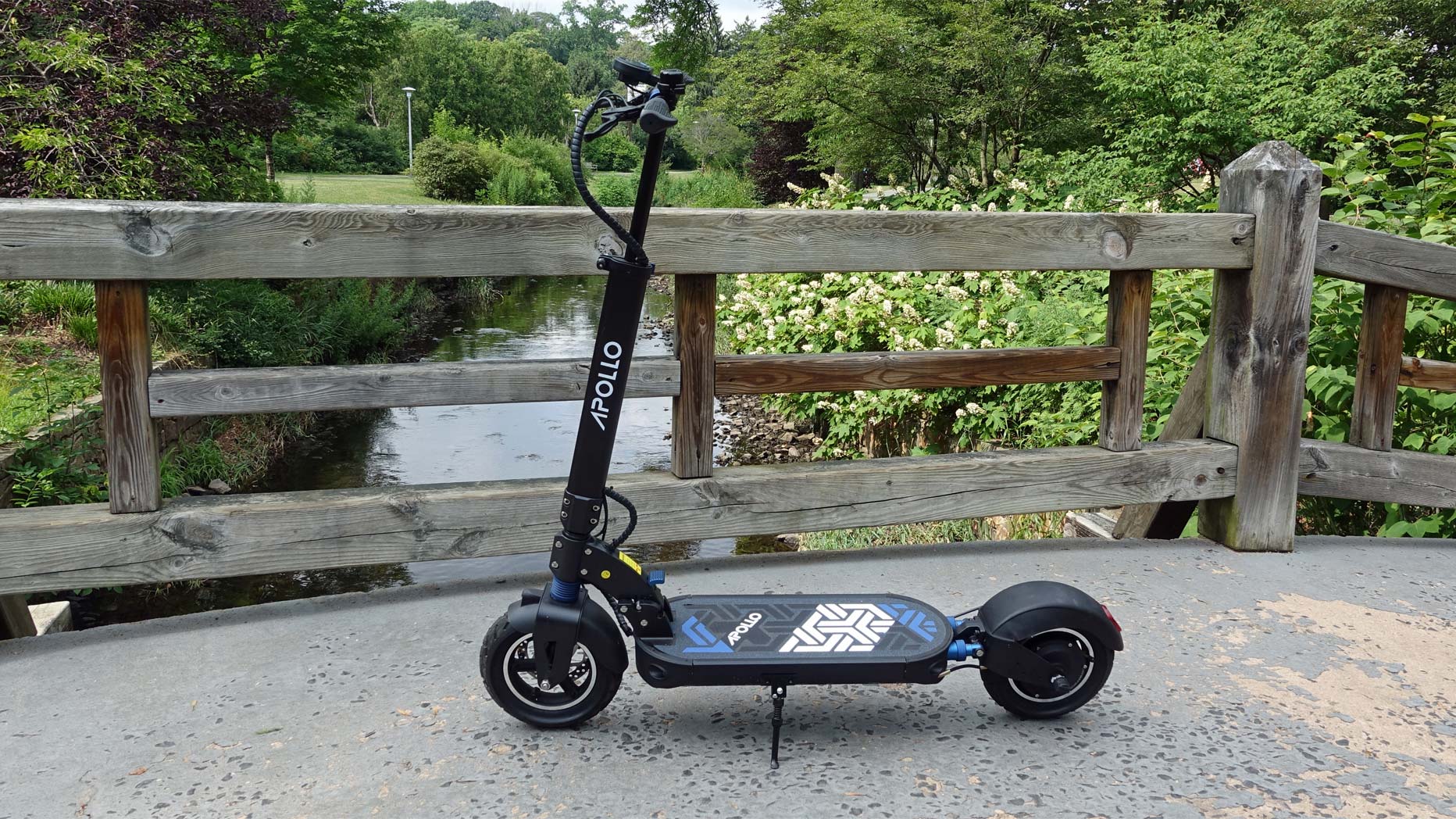Tom's Guide Verdict
Get the Apollo Explore electric scooter if you’re looking for a fast ride with a great range.
Pros
- +
Super fast
- +
Very stable, even at high speed
- +
Great range
- +
Regenerative braking
- +
Cool colored lights
Cons
- -
Front headlight could be brighter
- -
Hard to read display in sunlight
- -
Rear fender flaps going over bumps
Why you can trust Tom's Guide
Max Speed: 31 mph
Range: 34 miles
Max Rider Weight: 265 pounds
Motor: 1000W (1400W peak), rear-wheel drive
Battery: 52V 18.2aH
Charging time: 3-4 hours
Wheel size: 10-inch, inflatable
Size (unfolded): 48 x 47 x 9 inches
Size (folded): 46 x 17 x 9 inches
Weight: 52 pounds
If the Fast & Furious franchise was based on electric scooters rather than cars, the Apollo Explore would have a starring role — with or without the nitrous. The first time I stepped on this scooter, stepped on the accelerator, and tore down the street, I knew I was in for some serious fun.
In no time at all, I was cruising at 30 miles per hour, roaring past bikers, keeping up with cars, and terrorizing squirrels who darted in front of me. But it’s not just its speed that makes the Apollo Explore one of the best electric scooters. Read my full Apollo Explore review to see why I enjoyed my time reviewing the expensive — but electrifying — scooter.
Apollo Explore electric scooter: Price and availability
The Apollo Explore is available through Apollo’s website, and retails for $1,249. It’s one of four models in the lineup. The highest-end model is the Apollo Pro ($1,849), which has dual motors (either 1000 or 1200W), and depending on the configuration a top speed of 43 miles per hour and a range of up to 56 miles.
More than one kid said “whoa” as I whizzed by. I felt like Marty McFly after he skateboarded around 1955 Hill Valley.
If you don’t need all that in a scooter, the Apollo City ($949) has a 600W motor with 800W peak output, a top speed of 25 mph and a range of 28 miles. It weighs a lighter 39 pounds. The company’s least expensive model is the Apollo Light ($739), which has 350W motor, a top speed of 22 mph, a range of 22 miles, and weighs 37 pounds.
Apollo Explore electric scooter: Design
From the first glance, you can tell that the Apollo Explore is meant for some serious scooting. It has big, beefy tires, full suspension, and is tricked out in black and metallic blue.
This electric scooter has a nice, wide deck that’s 21 inches long and 9 inches wide, and covered with a grippy material. The height of the Explore’s steering column is adjustable, a nice touch for shorter and taller riders that you don’t find on a lot of scooters.
You can fold the Explore in half, but given its 52-pound weight—twice that of the Unagi Model One—I wouldn’t recommend carrying it long distances or up too many flights of stairs.
Get instant access to breaking news, the hottest reviews, great deals and helpful tips.
Each side of the handlebar has a brake lever (one for the front and one for the rear wheel), a must given this scooter’s power. On the right side of the handlebar is a small throttle lever, next to which is a circular display that shows your speed, distance traveled, and battery life, among other things. On the left side of the handlebar is a smallish bicycle bell; I preferred the larger twist-bell on the Segway Ninebot Max.
The Apollo Explore is distinct enough to turn heads during the day, but turn its lights on and go for a scoot in the evening, and you’ll really get some reactions.
Sweet Jesus, is this thing fast.
In addition to its headlight and taillight, the Explore has two rows of blue LEDs running on either side of the base, and a third row running up the steering tube. More than one kid said “whoa” as I whizzed by. I felt like Marty McFly after he skateboarded around 1955 Hill Valley.
Ironically, for all the lights it has, I found the Apollo Explore’s headlight to be pretty dim. It illuminated a few feet in front of the scooter, but given how fast this thing goes, I’d like to be able to see further ahead.
The scooter also comes with a hard shell case that you can strap to the steering tube and a multitool, which looks like a Swiss Army knife, but with an assortment of screwdrivers and wrenches. Should anything break, the Apollo Explore also has a two-year warranty, and comes with a two-week return policy.
Apollo Explore: Display and functions
The Explore’s color display is sizable (about 1.5 inches in diameter), but even at its maximum brightness, I had a hard time reading it in sunlight. Below are two buttons: Power and Mode, which you use to navigate and change settings. Press the Mode button, and you can switch between the Explore’s three speed settings; press and hold the Mode button for three seconds to turn the scooter’s lights on and off.
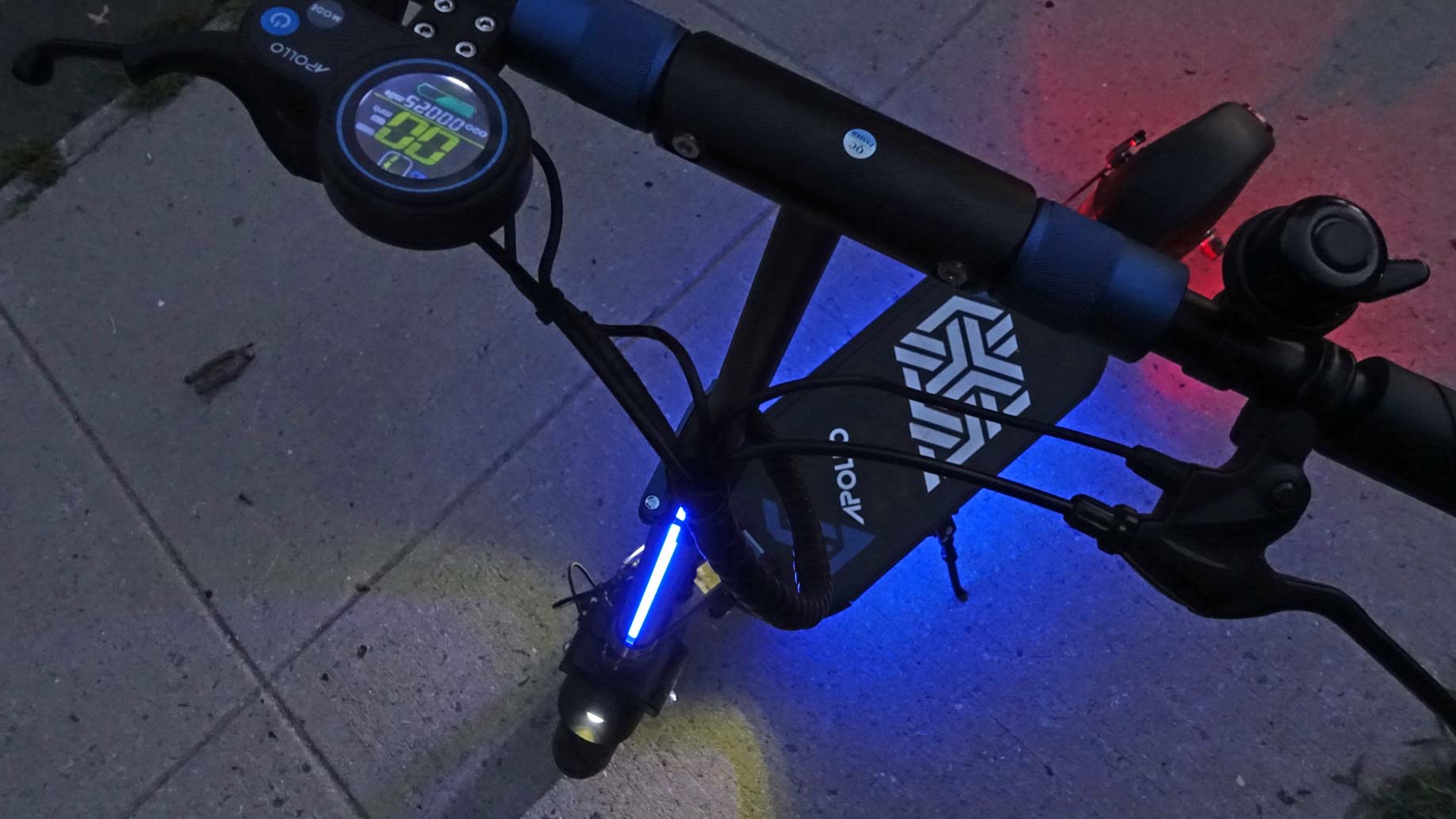
There are a number of advanced functions, which unfortunately, are not in the printed manual that comes with the scooter. (I had to watch this YouTube video instead.) To access advanced functions, hold the power and mode button for two seconds. You’re then shown the “P” settings, which you can cycle through by tapping the power button. Here, you can change things such as the display brightness, metric/imperial units, cruise control, shutoff time, and whether you want to use kick-to-start, or simply press the accelerator to get going.
Apollo Explore electric scooter: Performance and Range
Sweet Jesus, is this thing fast. A little tug on the Apollo Explore’s accelerator, and I was rocketing down the street, thanks to its powerful 1000-Watt motor (1400-Watt peak) in its rear wheel. The Explore’s top speed of 31 miles per hour puts all other electric scooters I’ve tested to shame. Most, like the Unagi Model One (my favorite) and the Segway Ninebot Kickscooter Max, top out at around 18 mph.
On my street, at the bottom of a hill, my local police department had set up one of those signs that shows your speed, as a way to get motorists to slow down. I made a few passes with the Apollo Explore at full throttle, and was able to get as fast as 32 miles per hour, more than enough to keep up with traffic, and in some cases, pass it. I can only imagine what the Apollo Pro feels like at 40 mph.
Going uphill proved little challenge; riding up a 6-degree incline, the Apollo Explore maintained a steady 17 mph.
Even at its top speed, the Apollo Explore felt remarkably stable. That’s because of its tires, which are not only big at 10 inches in diameter, but also about 2.75 inches wide, twice that of most other scooters. The Explore also has dual suspension, which really helps smooth out the ride when you’re flying over potholes and cracks in the road. The only quibble I had was with the rear plastic fender, which would rattle when I hit a bump.
The Apollo Explore’s dual disc brakes provided a firm grip, stopping the scooter very quickly. It also features regenerative braking, which trickles a little bit of electricity back into the battery.
With its 34-mile range, the Explore really will let you explore, too. I took it for a 6-mile spin, which involved several fairly steep hills, and the battery at the end was still four-fifths full.
Apollo Explore electric scooter review: Verdict
At $1,249, the Apollo Explore is not cheap. If you’re looking for something just to cruise to the grocery store and back, there are less expensive models, such as the Levy Electric, that cost half as much and get the job done. And, if you need something that you can easily carry up stairs, the Unagi Model One is far lighter. But if you want an electric scooter that can really rocket you around, and has the legs to go long distances, the Apollo Explore is worth the investment.

Michael A. Prospero is the U.S. Editor-in-Chief for Tom’s Guide. He oversees all evergreen content and oversees the Homes, Smart Home, and Fitness/Wearables categories for the site. In his spare time, he also tests out the latest drones, electric scooters, and smart home gadgets, such as video doorbells. Before his tenure at Tom's Guide, he was the Reviews Editor for Laptop Magazine, a reporter at Fast Company, the Times of Trenton, and, many eons back, an intern at George magazine. He received his undergraduate degree from Boston College, where he worked on the campus newspaper The Heights, and then attended the Columbia University school of Journalism. When he’s not testing out the latest running watch, electric scooter, or skiing or training for a marathon, he’s probably using the latest sous vide machine, smoker, or pizza oven, to the delight — or chagrin — of his family.


